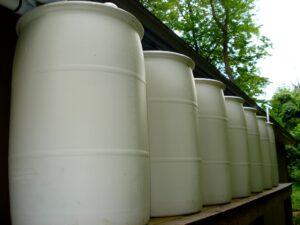Water is one of the most precious resources on Earth, and with climate change causing more frequent droughts and water shortages, it’s more important than ever to find ways to conserve water. One way to do this is by building a rainwater collection system. Collecting rainwater not only helps to conserve water but also helps to reduce your water bill and can be used for a variety of purposes, such as watering plants, washing cars, or flushing toilets.
Step 1: Determine the Best Location
The first step in building a rainwater collection system is to determine the best location. The ideal location is where there’s a large surface area to collect rainwater, such as the roof of your home, shed, or garage. However, you also need to ensure that the location is safe, and the collected water won’t cause any damage or erosion to your property.
Step 2: Choose a Rainwater Collection System

There are various types of rainwater collection systems, including:
- Rain Barrel System: This is the simplest and most affordable system. It involves attaching a rain barrel to a downspout to collect rainwater.
- In-Ground System: This involves installing a large tank or cistern underground to collect rainwater. This system is more expensive but can collect a larger amount of water.
- Above-Ground System: This system involves installing a large tank or cistern above ground. It’s similar to the in-ground system but easier to install and maintain.
- Hybrid System: This system combines both above-ground and in-ground components.
Choose the rainwater collection system that best suits your needs and budget.
Step 3: Install the Rainwater Collection System
Once you’ve chosen the rainwater collection system, it’s time to install it. Here are the general steps for installing a rainwater collection system:
- Install a filter to prevent debris, leaves, and other materials from entering the system.
- Install a diverter to redirect water from the downspout to the collection system.
- Install a pump to move the water from the collection system to where it’s needed.
- Install a spigot or faucet to allow access to the collected water.
Step 4: Maintain the Rainwater Collection System
Once the rainwater collection system is installed, it’s important to maintain it to ensure it works effectively. Here are some tips for maintaining your rainwater collection system:
- Clean the system regularly to prevent debris and other materials from clogging the filter or pump.
- Inspect the system after heavy rain or storms to ensure there are no leaks or damage.
- Check the water quality periodically to ensure it’s safe for the intended use.
- Winterize the system in colder climates to prevent damage from freezing temperatures.
Building a rainwater collection system is a simple yet effective way to conserve water and reduce your water bill. With the steps outlined in this article, you can build your own rainwater collection system and enjoy the benefits of collecting rainwater.
Keywords: conserve water, water bill, droughts, climate change, water shortage, location, rain barrel system, in-ground system, above-ground system, hybrid system, filter, diverter, pump, spigot, maintain, clean, water quality, winterize.
Check out FoodieScapes for articles on growing and preparing food.
Check out StoryScapes for articles on creative writing.











